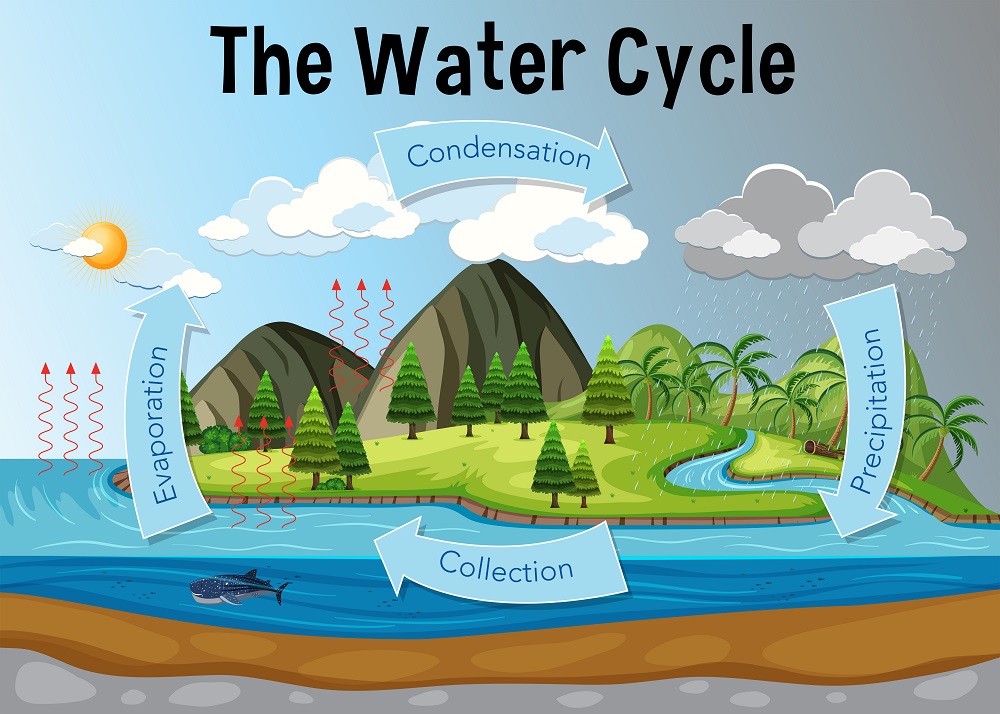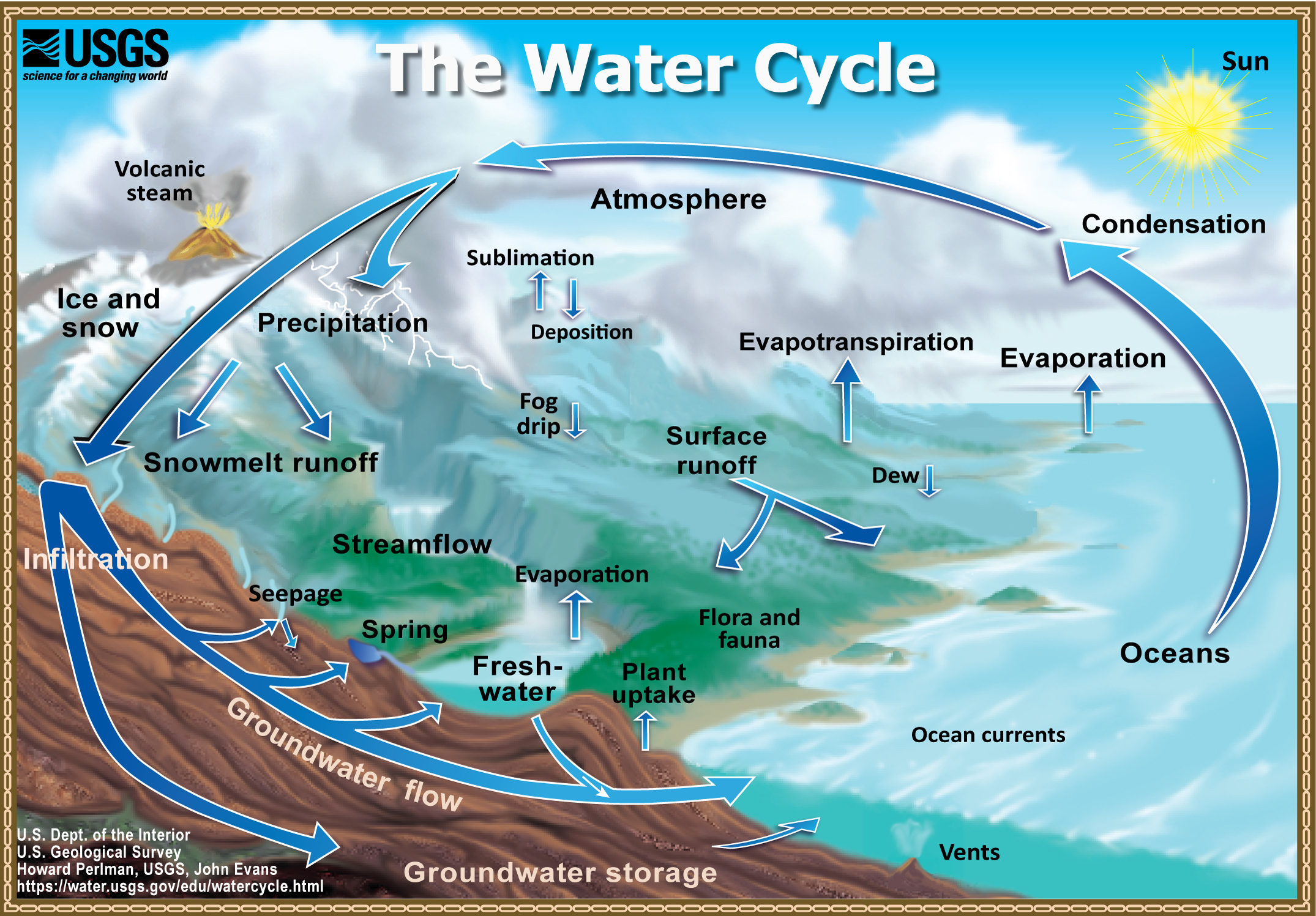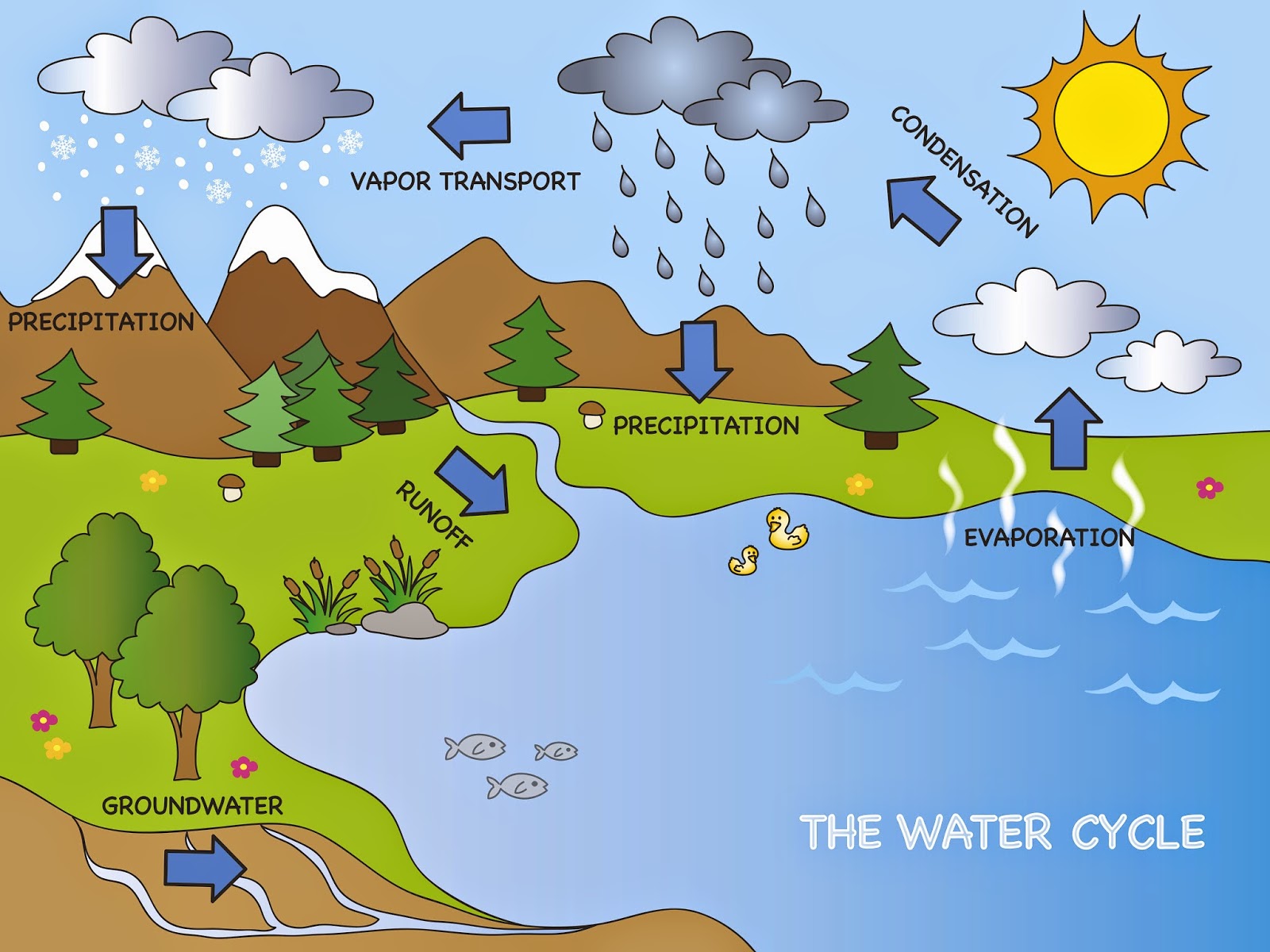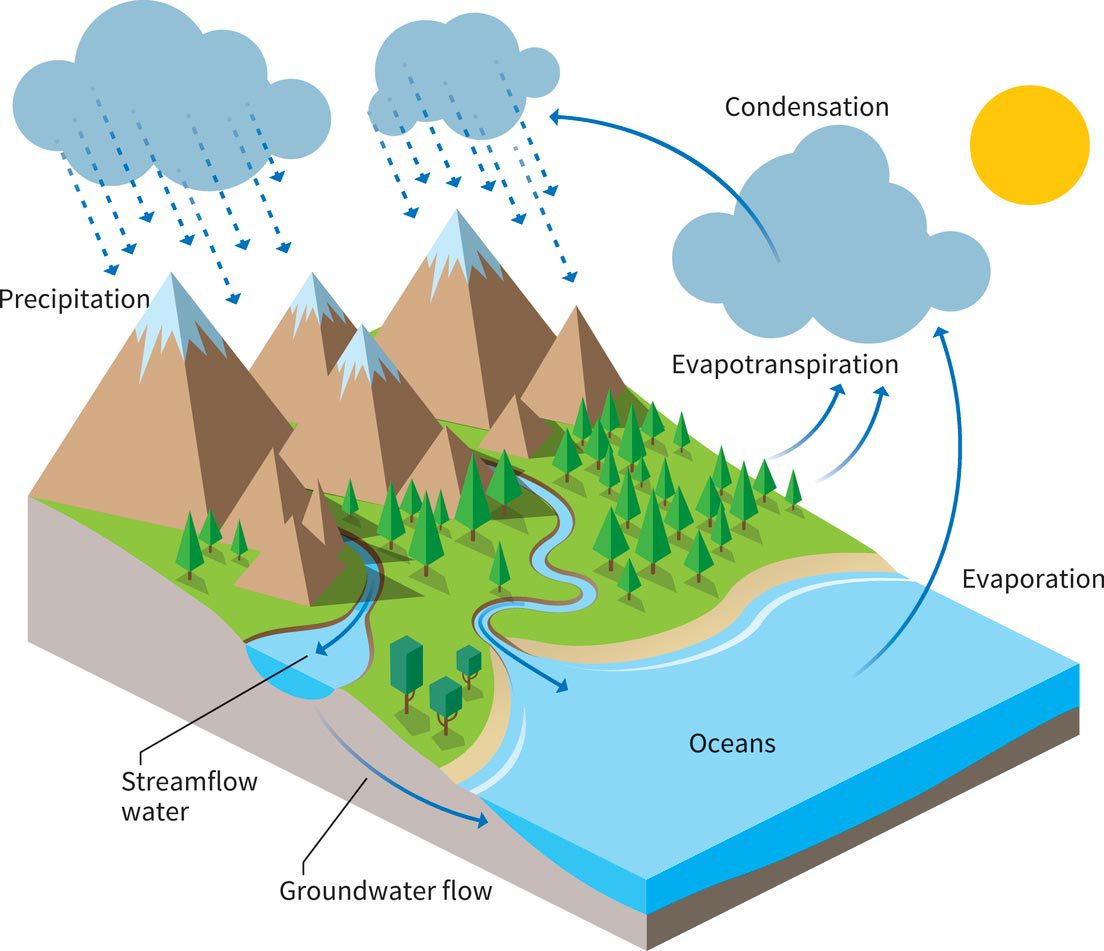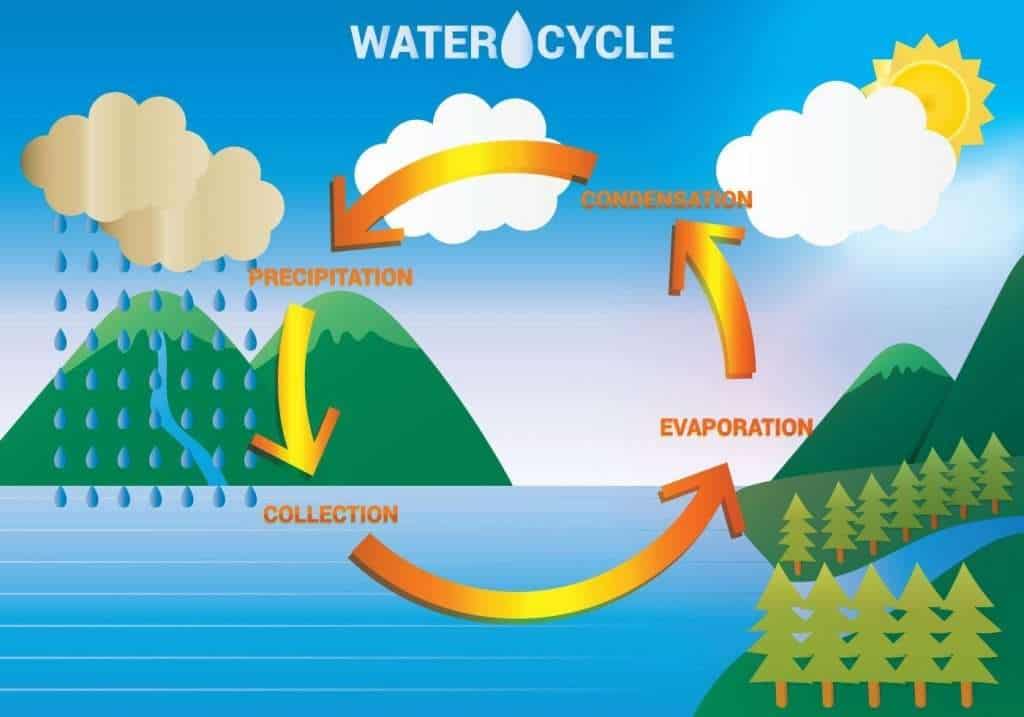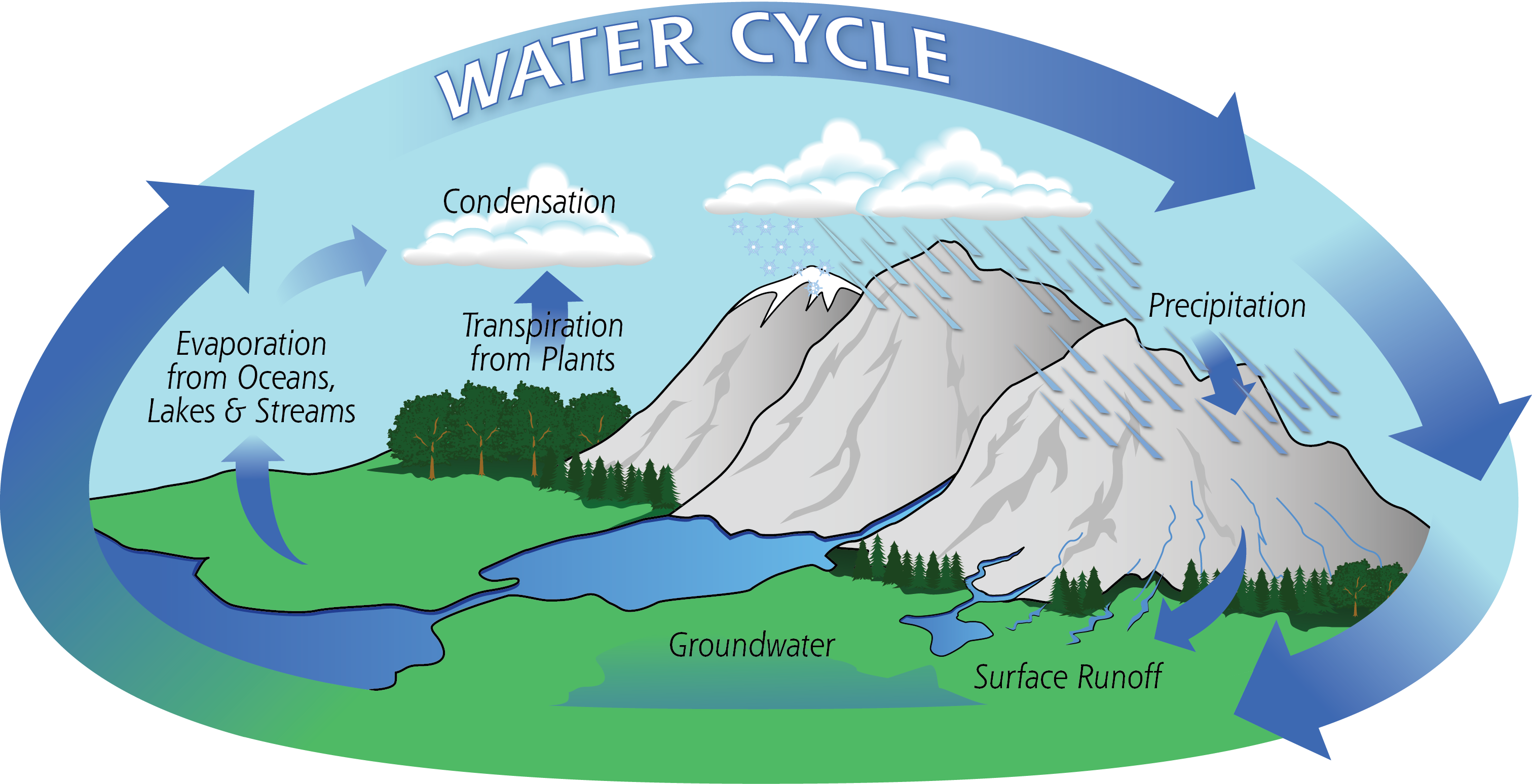Printable Water Cycle Diagram
Printable Water Cycle Diagram - Web a diagram of the water cycle showing evaporation, condensation, precipitation and more. Web water cycle 05 03 20 final. This process is always happening everywhere. This process is called infiltration. Web water cycle diagram worksheets provide students with visual representations of the stages, allowing them to better understand the process of evaporation, condensation, precipitation, and collection in a structured and organized format. Web these water cycle printable pages include a water cycle diagram worksheet, pages to label, coloring pages, and more! Web 2nd grade water cycle worksheet. In this diagram, arrows are used to show the movement of water between the atmosphere, land, and bodies of water. It forms clouds and falls to earth as a liquid or solid. Some of the precipitation soaks into the ground where it becomes groundwater. Our interactive diagram allows you to mouse around the parts of the water cycle and view explanations, pictures, and more online. The diagram is currently available as a pdf in two sizes: Web 2nd grade water cycle worksheet. Evaporation, condensation, precipitation, and accumulation. Water in the atmosphere is a gas. Some of the precipitation soaks into the ground where it becomes groundwater. Help kids review this important ecological process with our water cycle worksheets for kindergarten through fifth grade. Kids at this age are quite smart in understanding things through activities. The pdf also includes one page of simple lesson notes. Assist kids in identifying a few more steps like runoff, percolation, infiltration and transpiration. The water cycle shows how water moves on earth. Web 2nd grade water cycle worksheet. The diagram is available as a downloadable product in. Earth's water is always in movement, and the natural water cycle, also known as the hydrologic cycle, describes the continuous movement of water on, above, and below the surface of the earth. Web water cycle vocabulary. Web this comprehensive diagram depicts the global water cycle and will familiarize students with lesser known concepts like saline lakes, brackish wetlands, pools, and fluxes in addition to core concepts like evapotranspiration, groundwater, precipitation, and reservoirs. Some of the precipitation soaks into the ground where it becomes groundwater. Web the free water cycle pdf includes three water cycle diagrams to. The water cycle shows how water moves on earth. Web a basic diagram of the water cycle usually shows the essential stages: Use these free science worksheets with kindergarten, first grade, 2nd grade, 3rd grade, 4th grade, and 5th grade students. It forms clouds and falls to earth as a liquid or solid. Earth's water is always in movement, and. Introduce young learners to the concept of water, carbon, nitrogen cycle worksheets with visually appealing diagrams and textual information. The water cycle shows how water moves on earth. Web colorful water cycle diagram: It forms clouds and falls to earth as a liquid or solid. Web this comprehensive diagram depicts the global water cycle and will familiarize students with lesser. Explore a prime aspect of earth's systems starting with the water cycle and its stages, including evaporation, condensation, precipitation, and collection. This process is always happening everywhere. Web a basic diagram of the water cycle usually shows the essential stages: Web our newest diagram, released in 2022, depicts the global water cycle, as well as how human water use affects. It shows how human water use affects where water is stored, how it moves, and how clean it is. Some of the precipitation soaks into the ground where it becomes groundwater. Kids at this age are quite smart in understanding things through activities. The process where water turns from liquid to vapor and rises into the. Web if the child. The process where water turns from liquid to vapor and rises into the. Some of the precipitation soaks into the ground where it becomes groundwater. The diagram is available as a downloadable product in. Our interactive diagram allows you to mouse around the parts of the water cycle and view explanations, pictures, and more online. Water in the atmosphere is. Use these free science worksheets with kindergarten, first grade, 2nd grade, 3rd grade, 4th grade, and 5th grade students. Evaporation, condensation, precipitation, and accumulation. Web the free water cycle pdf includes three water cycle diagrams to help explain the steps of the water cycle as well as two lesson check worksheets. The pdf also includes one page of simple lesson. Use these free science worksheets with kindergarten, first grade, 2nd grade, 3rd grade, 4th grade, and 5th grade students. Introduce young learners to the concept of water, carbon, nitrogen cycle worksheets with visually appealing diagrams and textual information. The pdf also includes one page of simple lesson notes. Web this comprehensive diagram depicts the global water cycle and will familiarize. Water in the atmosphere is a gas. Web these water cycle printable pages include a water cycle diagram worksheet, pages to label, coloring pages, and more! The pdf also includes one page of simple lesson notes. This process is always happening everywhere. Web if the child is inquisitive about water, our free, printable water cycle worksheets have all the information. Evaporation, condensation, precipitation, and accumulation. Web a diagram of the water cycle showing evaporation, condensation, precipitation and more. Web water cycle 05 03 20 final. Precipitation can be rain, snow, or ice. The pdf also includes one page of simple lesson notes. This process is called infiltration. Assist kids in identifying a few more steps like runoff, percolation, infiltration and transpiration. The water cycle shows how water moves on earth. Kids at this age are quite smart in understanding things through activities. Web water cycle vocabulary chart. Web water cycle diagram worksheets provide students with visual representations of the stages, allowing them to better understand the process of evaporation, condensation, precipitation, and collection in a structured and organized format. Introduce young learners to the concept of water, carbon, nitrogen cycle worksheets with visually appealing diagrams and textual information. Web this comprehensive diagram depicts the global water cycle and will familiarize students with lesser known concepts like saline lakes, brackish wetlands, pools, and fluxes in addition to core concepts like evapotranspiration, groundwater, precipitation, and reservoirs. Some of the precipitation soaks into the ground where it becomes groundwater. It shows how human water use affects where water is stored, how it moves, and how clean it is. Explore a prime aspect of earth's systems starting with the water cycle and its stages, including evaporation, condensation, precipitation, and collection.Water Cycle The Definitive Guide Biology Dictionary
The Water Cycle summary, USGS Water Science School
Diagram of the Water Cycle Water cycle, Science doodles, Water cycle
The Water Cycle Diagram Easier for Kids Printable 101 Diagrams
FileSimple Water Cycle.JPG
Free Printable Water Cycle Diagram
Water Cycle Diagram With Explanation Class 7 Design Talk
Water Cycle North Penn Water Authority
What is the Water Cycle in Ecology? Diagram, Steps and Facts
The Water Cycle Precipitation Education
The Process Where Water Turns From Liquid To Vapor And Rises Into The.
Earth's Water Is Always In Movement, And The Natural Water Cycle, Also Known As The Hydrologic Cycle, Describes The Continuous Movement Of Water On, Above, And Below The Surface Of The Earth.
The Diagram Is Available As A Downloadable Product In.
In This Diagram, Arrows Are Used To Show The Movement Of Water Between The Atmosphere, Land, And Bodies Of Water.
Related Post:
